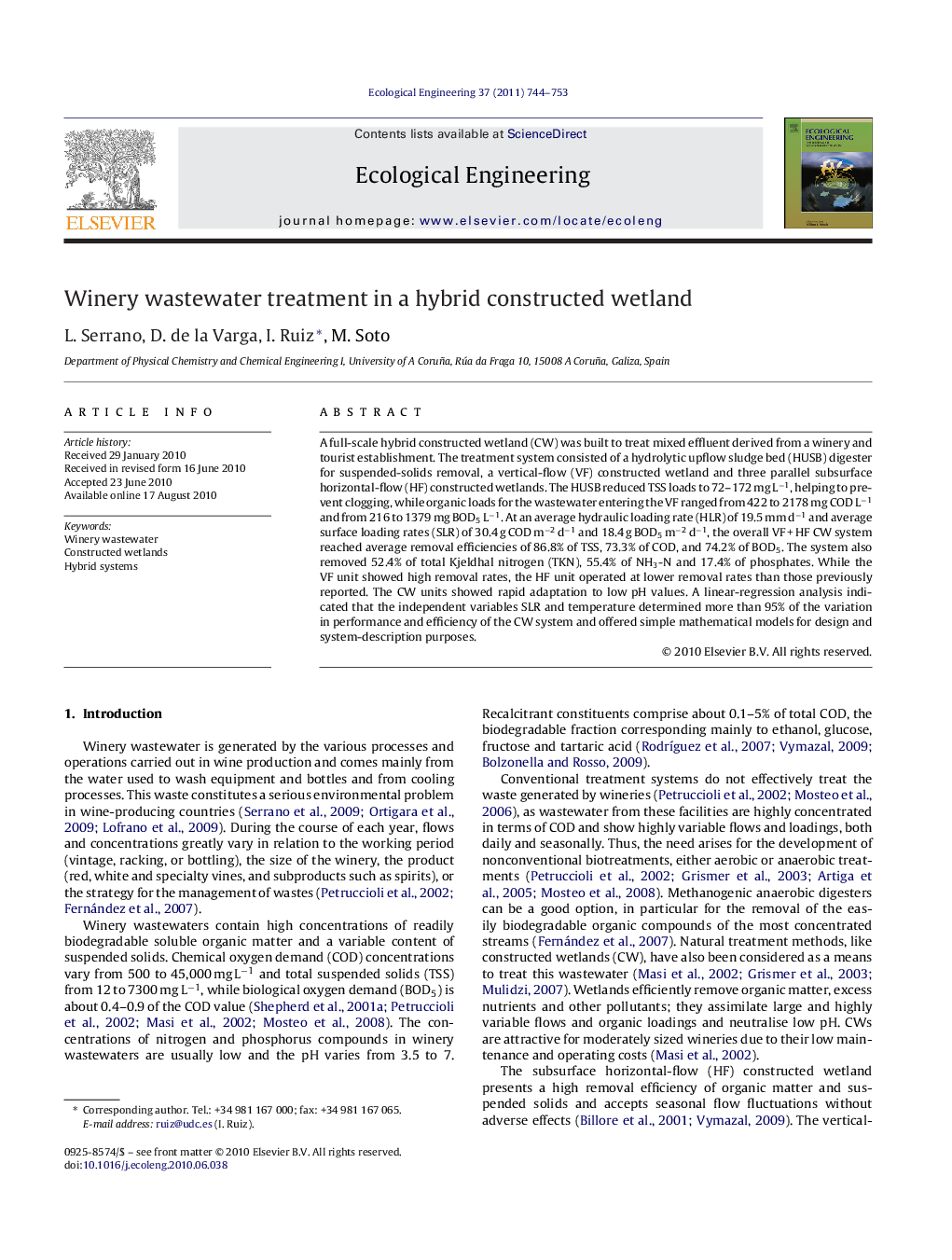| Article ID | Journal | Published Year | Pages | File Type |
|---|---|---|---|---|
| 4390192 | Ecological Engineering | 2011 | 10 Pages |
Abstract
A full-scale hybrid constructed wetland (CW) was built to treat mixed effluent derived from a winery and tourist establishment. The treatment system consisted of a hydrolytic upflow sludge bed (HUSB) digester for suspended-solids removal, a vertical-flow (VF) constructed wetland and three parallel subsurface horizontal-flow (HF) constructed wetlands. The HUSB reduced TSS loads to 72-172 mg Lâ1, helping to prevent clogging, while organic loads for the wastewater entering the VF ranged from 422 to 2178 mg COD Lâ1 and from 216 to 1379 mg BOD5 Lâ1. At an average hydraulic loading rate (HLR) of 19.5 mm dâ1 and average surface loading rates (SLR) of 30.4 g COD mâ2 dâ1 and 18.4 g BOD5 mâ2 dâ1, the overall VF + HF CW system reached average removal efficiencies of 86.8% of TSS, 73.3% of COD, and 74.2% of BOD5. The system also removed 52.4% of total Kjeldhal nitrogen (TKN), 55.4% of NH3-N and 17.4% of phosphates. While the VF unit showed high removal rates, the HF unit operated at lower removal rates than those previously reported. The CW units showed rapid adaptation to low pH values. A linear-regression analysis indicated that the independent variables SLR and temperature determined more than 95% of the variation in performance and efficiency of the CW system and offered simple mathematical models for design and system-description purposes.
Related Topics
Life Sciences
Agricultural and Biological Sciences
Ecology, Evolution, Behavior and Systematics
Authors
L. Serrano, D. de la Varga, I. Ruiz, M. Soto,
